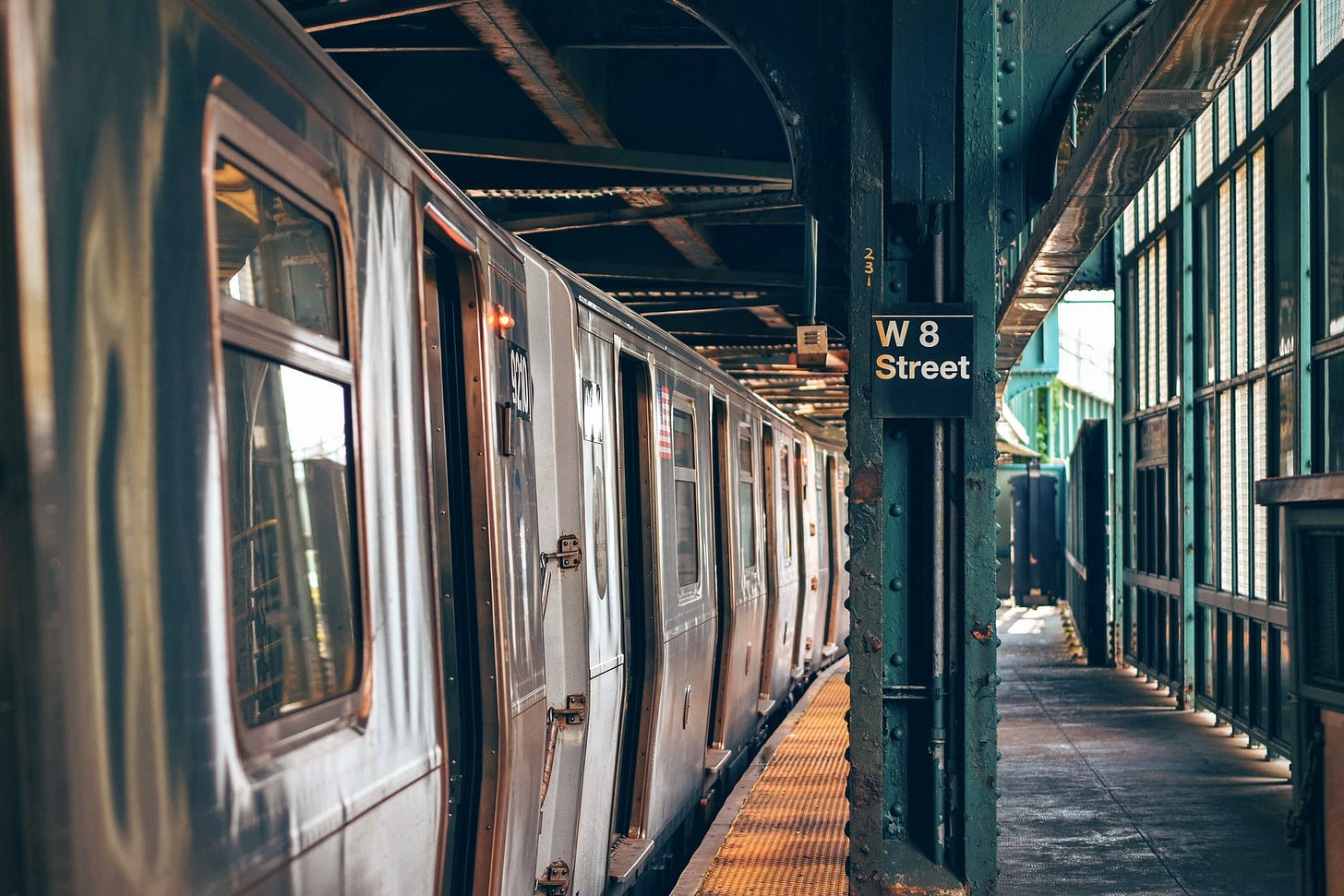We Need Better Transit Stations
Bus stops and train stations are poorly equipped to accommodate waiting travelers with any comfort. Such insufficient facilities risk sabotaging transit agencies' goal of growing ridership.

When it comes to public transportation, waiting for the bus or train is as large a part of the experience as the vehicles themselves. From bus stops to train stations above, below, and at ground-level, the places people wait to be taken to their destination help define their trip. Whether someone waits for three minutes or thirty, the space in which one waits shapes their sense of comfort, safety, and even overall mood about their journey.
It’s for this reason that the lack of sufficient transit stops and stations across the nation is such a public policy failure. Climate change activists, affordable housing advocates, and stakeholders invested in the success of cities all agree that accessible, robust public transportation is essential to achieving their goals. Despite this growing consensus on the importance of public transportation, the experience of waiting for public transit is more often than not off-putting, an insult to riders’ dignity and a challenge to their well-being. Depending on the stop or station, transit riders are expected to stand with no relief; brave extreme weather with no shelter; go without access to restrooms for upwards of an hour (at least); and wait alone at night, sometimes without even a streetlight. In addition to these common indignities, riders have no access to battery chargers, wifi, or food and water, all of which are provided in airports in recognition that waiting to continue one’s journey should not inconvenience people.
Compared to airports, the experience of waiting for many buses and trains ranges from inconvenient to intolerable, depending on the time, weather, etc. However, despite increased support for funding and expanding public transit, stations and stops have appeared to remain an afterthought in policy discussions. The dichotomy between riders’ perception of the value of stations that consider their riders and policy discussions’ lack of value can be seen in the outcry over Greyhound Buses’ new ownership choosing to close and sell its stations in favor of making riders wait for hours at sidewalk-mounted signs. Although Greyhound was and remains a private company, the design of public transit stations old and new emphasizes that waiting riders are a lesser priority in the station planning than the quick movement of people to and from trains.
The lack of dignity that riders experience waiting for transit is a barrier to growing transit ridership (and, for those who don’t have cars by choice or by necessity, a catastrophic equity failure). Stops and stations are the first experience and the last experience most people have with transportation systems. Many of these last encounters happen at night, in poor weather, or in other circumstances that accentuate their flaws. As a result, these stops and stations have just as much influence over people’s experience with – and perception of – public transit – as the buses and trains themselves.
It is for this reason that cities and transit agencies must redesign stops and stations to prioritize rider comfort, safety, and dignity. Insufficient stops and stations are a self-inflicted wound that present an experience of transit that is uncomfortable and, at worst, unsafe. As long as people perceive waiting for transit as inconvenient and uncomfortable compared to driving, transit will not be perceived as a viable alternative to driving. Given the climate and equity consequences of such a failure, advocates and providers must prioritize upgrading transit stops and stations.



